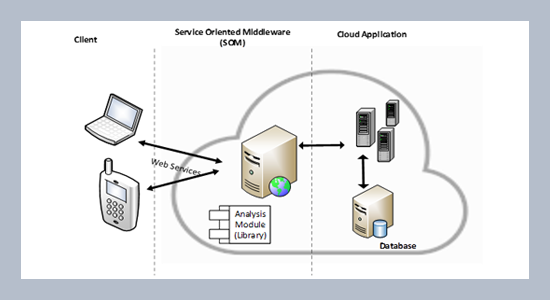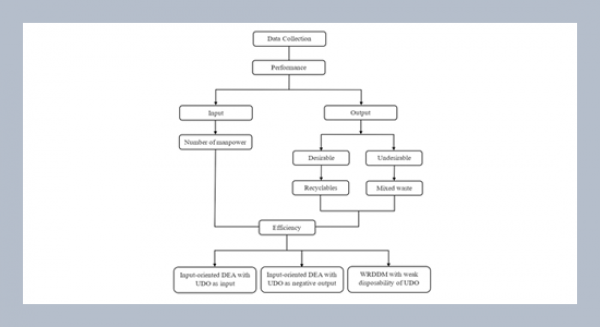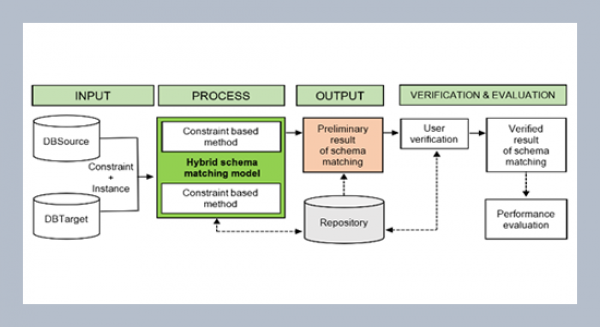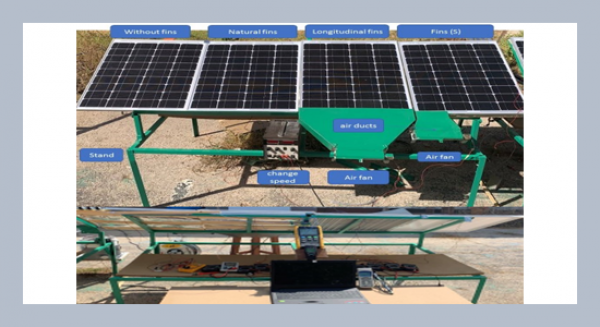REFERENCES
- Abdelfattah, A.S., Abdelkader, T., EI-Horbaty, E.S.M. 2020. RAMWS: Reliable approach using middleware and WebSockets in mobile cloud computing. Ain Shams Engineering Journal, 11, 1083–1092.
- Abdelfattah, A.S., Abdelkader, T., EI-Horbaty, E.S.M. 2018. RSAM: An enhanced architecture for achieving web services reliability in mobile cloud computing. Journal of King Saud University-Computer and Information Sciences, 30, 164–174.
- Alshamrani, M. 2022. IoT and artificial intelligence implementations for remote healthcare monitoring systems: A survey. Journal of King Saud University- Computer and Information Sciences, 34, 4687–4701.
- Ardhianto, P., Liau, B.Y., Jan, Y.K., Tsai, J.Y., Akhyar, F., Lin, C.Y., Subiakto R.B.R., Lung, C.W. 2022. Deep learning in left and right footprint image detection based on plantar pressure. Applied Sciences, 12, 8885.
- Bajaj, K., Jain, S., Singh, R. 2023. Context-aware offloading for iot application using fog-cloud computing. International Journal of Electrical and Electronics Research, 11, 69–83.
- Balasubramanian, N., Gurumurthy, T.R., Bharat, D. 2020. Receiver based contention management: A cross layer approach to enhance performance of wireless networks. Journal of King Saud University-Computer and Information Sciences, 32, 1117–1126.
- Calimeri, F., Cauteruccio, F., Cinelli, L.U.C.A., Marzullo, A., Stamile, C., Terracina, G., Durand-Dubief, F., Sappey-Marinier, D. 2019. A logic-based framework leveraging neural networks for studying the evolution of neurological disorders. Theory and Practice of Logic Programming, 21, 80–124.
- Cao, L. 2022. AI in finance: Challenges, techniques, and opportunities. ACM Computing Surveys, 55.
- Castelli, M., Manzoni, L., Espindola, T., Popovič, A., De Lorenzo, A. 2021. Generative adversarial networks for generating synthetic features for Wi-Fi signal quality. PLoS ONE, 16, e0260308.
- Champaneria, T., Jardosh, S., Makwana, A. 2022. Microservices in IoT middleware architectures: Architecture, trends, and challenges. IOT with Smart Systems: Proceedings of ICTIS 2022, 2, 381–395.
- Chen, Y., Lin, C., Huang, J., Xiang, X., Shen, X. 2017. Energy efficient scheduling and management for large-scale services computing systems. IEEE Transactions on Services Computing, 10, 217–230.
- Dewi, C., Chen, A.P.S., Christanto, H.J. 2023a. Deep learning for highly accurate hand recognition based on Yolov7 model. Big Data and Cognitive Computing, 7, 53.
- Dewi, C., Chen, A.P.S., Christanto, H.J. 2023b. Recognizing Similar musical instruments with YOLO models. Big Data and Cognitive Computing, 7, 94.
- Dewi, C. Chen, R.-C. 2022. Automatic medical face mask detection based on cross-stage partial network to combat COVID-19. Big Data and Cognitive Computing, 6, 106.
- Dewi, C., Chen, R.-C., Zhuang, Y.-C., Jiang, X., Yu, H. 2023c. Recognizing road surface traffic signs based on Yolo models considering image flips. Big Data and Cognitive Computing, 7, 54.
- Dewi, C., Chen, R.C., Yu, H., Jiang, X. 2021. Robust detection method for improving small traffic sign recognition based on spatial pyramid pooling. Journal of Ambient Intelligence and Humanized Computing, 12, 1–18.
- Dewi, C., Chen, A.P.S., Christanto, H.J. 2023d. YOLOv7 for face mask identification based on deep learning. 2023 15th International Conference on Computer and Automation Engineering (ICCAE), 193–197.
- Falzon, D., Migliori, G.B., Jaramillo, E., Weyer, K., Joos, G., Raviglione, M. 2017. Digital health to end tuberculosis in the Sustainable Development Goals era: Achievements, evidence and future perspectives. European Respiratory Journal, 50.
- Findi, M. 2021. Aplikasi Digital dalam Mendukung Layanan Kesehatan untuk Eliminasi Tuberkulosis di Indonesia.
- França, J.M., Soares, M.S. 2015. SOAQM: Quality model for SOA Applications based on ISO 25010. In ICEIS, 60–70.
- Gamal, I., Abdel-Galil, H. Ghalwash, A. 2022. Osmotic message-oriented middleware for Internet of Things. Computers, 11, 56.
- Giao, J., Nazarenko, A. A., Luis-Ferreira, F., Gonçalves, D., Sarraipa, J. 2022. A framework for service-oriented architecture (SOA)-based IoT application development. Processes, 10, 1782.
- Huang, J., Lin, C., Kong, X., Wei, B., Shen, X. 2014. Modeling and analysis of dependability attributes for services computing systems. IEEE Transactions on Services Computing, 7, 599–613.
- Huang, J., Lin, C., Wan, J. 2013. Modeling, analysis and optimization of dependability-aware energy efficiency in services computing systems. Proceedings - IEEE 10th International Conference on Services Computing, SCC, 683–690.
- Kuhn Cuellar, L., Friedrich, A., Gabernet, G., de la Garza, L., Fillinger, S., Seyboldt, A., Koch, T., zur Oven-Krockhaus, S., Wanke, F., Richter, S., Thaiss, W.M., Horger, M., Malek, N., Harter, K., Bitzer, M., Nahnsen, S. 2022. A data management infrastructure for the integration of imaging and omics data in life sciences. BMC Bioinformatics, 23, 61.
- Lamnaour, M., Begdouri, M.A., Mesmoudi, Y., El Khamlichi, Y., Tahiri, A. 2022. A semantic MSOAH-IoT design for improving efficiency and solving heterogeneity within IoT applications. Journal of Communications, 17.
- Lee, Y., Raviglione, M.C., Flahault, A. 2020. Use of digital technology to enhance tuberculosis control: Scoping review. Journal of Medical Internet Research, 22, 1–15.
- Lyu, G., Liu, P., Lu, Y., Wang, T., Kang, X. 2021. A data middle platform architecture based on microservice serving power grid business. 2021 8th IEEE International Conference on Cyber Security and Cloud Computing (CSCloud)/2021 7th IEEE International Conference on Edge Computing and Scalable Cloud (EdgeCom), 219–224.
- Mahmoud, Q.H. 2004. Middleware for communications, 73. John Wiley & Sons.
- Mesmoudi, Y., Lamnaour, M., El Khamlichi, Y., Tahiri, A., Touhafi, A., Braeken, A. 2020. A middleware based on service oriented architecture for heterogeneity issues within the Internet of Things (MSOAH-IoT). Journal of King Saud University-Computer and Information Sciences, 32, 1108–1116.
- Mohamed, N., Al-Jaroodi, J., Jawhar, I., Lazarova-Molnar, S., Mahmoud, S. 2017. SmartCityWare: A service-oriented middleware for cloud and fog enabled smart city services. IEEE Access, 5, 17576–17588.
- Naseer, A., Alkazemi, B.Y., Aldoobi, H.I. 2016. A general-purpose service-oriented middleware model for WSN. International Conference on Ubiquitous and Future Networks, ICUFN, 283–287.
- Nayak, N., Ambalavanan, U., Thampan, J.M., Grewe, D. 2023. Reimagining automotive service-oriented communication: A case study on programmable data planes. IEEE Vehicular Technology Magazine, 2, 2–12.
- Ngwatu, B.K., Nsengiyumva, N.P., Oxlade, O., Mappin-Kasirer, B., Nguyen, N.L., Jaramillo, E., Falzon, D., Schwartzman, K. 2018. The impact of digital health technologies on tuberculosis treatment: A systematic review. European Respiratory Journal, 51.
- Phuttharak, J., Loke, S.W. 2023. An event-driven architectural model for integrating heterogeneous data and developing smart city applications. Journal of Sensor and Actuator Networks, 12, 12.
- Prisilla, A.A., Guo, Y.L., Jan, Y.K., Lin, C.Y., Lin, F.Y., Liau, B.Y., Tsai, J.Y., Ardhianto, P., Pusparani, Y., Lung, C.W. 2023. An approach to the diagnosis of lumbar disc herniation using deep learning models. Frontiers in Bioengineering and Biotechnology, 11.
- Pusparani, Y., Lin, C.Y., Jan, Y.K., Lin, F.Y., Liau, B.Y., Ardhianto, P., Farady, I., Alex, J.S.R., Aparajeeta, J., Chao, W.H., Lung, C.W. 2023. Diagnosis of Alzheimer’s disease using convolutional neural network with select slices by landmark on hippocampus in MRI images. IEEE Access, 11.
- Riono, P. 2019. Tantangan Kita Mencapai Eliminasi Tuberkulosis di Indonesia tahun 2030. Jurnal Kesehatan, 2–9.
- Rohmah, R.N., Handaga, B., Nurokhim, N., Soesanti, I. 2019. A statistical approach on pulmonary tuberculosis detection system based on X-ray image. Telkomnika (Telecommunication Computing Electronics and Control), 17, 1474–1482.
- Sathis Kumar, T., Latha, K. 2020. Middleware interoperability performance using interoperable reinforcement learning technique for enterprise business applications. Journal of Intelligent & Fuzzy Systems, 38.
- Sembiring, J., Uluwiyah, A. 2015. Data exchange design with SDMX format for interoperability statistical data. TELKOMNIKA Indonesian Journal of Electrical Engineering, 14, 343–352.
- Sharif, Z., Jung, L.T., Ayaz, M., Yahya, M., Pitafi, S. 2023. Priority-based task scheduling and resource allocation in edge computing for health monitoring system. Journal of King Saud University-Computer and Information Sciences, 35, 544–559.
- Suhardi, N.K., Sembiring, J. 2017. Service computing system engineering life cycle. Proceeding of the Electrical Engineering Computer Science and Informatics, 4, 347–352.
- Sukarsa, I., Wisswani, N.W., Wirabuana, P. 2014. Data exchange between information system at low bandwidth quality using messaging. Journal of Theoretical and Applied Information Technology, 60, 417–422.
- Suprihadi, S., Wijono, S., Hartomo, K.D. 2020. Service oriented middleware for tuberculosiss information services management. 2020 International Seminar on Application for Technology of Information and Communication (iSemantic), 425–430.
- Teixeira, T., Hachem, S., Issarny, V., Georgantas, N. 2011. Service oriented middleware for the internet of things: A perspective. In European conference on a service-based internet, 220–229.
- Tjung, Y., Wibowo, A., Ridha, M.A.F. 2020. A model and implementation of academic data integration in near-real time using message-oriented middleware to support analysis of student performance in the information technology department of Politeknik Caltex Riau. JUTI: Jurnal Ilmiah Teknologi Informasi, 18, 9–18
- Wang, N., Zhang, H., Zhou, Y., Jiang, H., Dai, B., Sun, M., Li, Y., Kinter, A., Huang, F. 2019. Using electronic medication monitoring to guide differential management of tuberculosis patients at the community level in China. BMC Infectious Diseases, 19, 1–9.
- Wisswani, N.W., Wijaya, I.W.K. 2018. Message oriented middleware for library’s metadata exchange. Telkomnika (Telecommunication Computing Electronics and Control), 16, 2756–2762.
- World Health Organization. 2017. Handbook for the use of digital technologies to support tuberculosis medication adherence.
- World Health Organization. 2020. Global tuberculosis report 2020. World Health Organization, Geneva.
- World Health Organization. 2021. Global tuberculosis report 2021. Geneva.
- Wu, Z. 2014. Service computing: Concept, method and technology. Academic Press.
- Ye, D., He, Q., Wang, Y., Yang, Y. 2019. An Agent-based integrated self-evolving service composition approach in networked environments. IEEE Transactions on Services Computing, 12, 880–895.
- Zhang, Y., Tang, D., Zhu, H., Zhou, S., Zhao, Z. 2022. An efficient IIoT gateway for cloud–edge collaboration in cloud manufacturing. Machines, 10.















